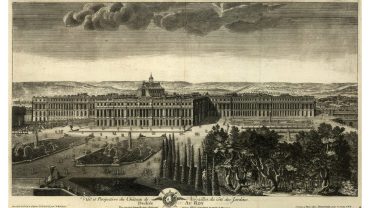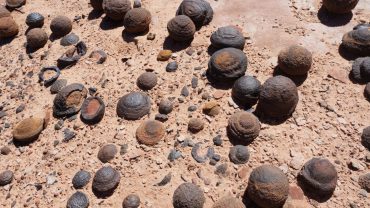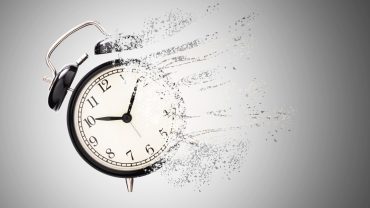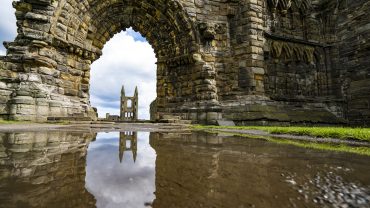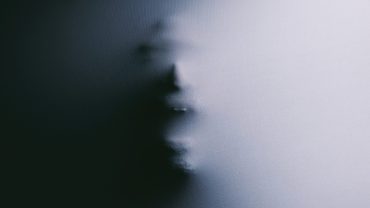There are over 30,000 freshwater lochs in Scotland, yet one stands out as a global household name: Loch Ness. Stretching across some 23 miles, ending just southwest of Inverness in the Scottish Highlands, it’s known not for its picturesque scenery or even its status as the country’s largest loch by volume. No. Instead, it’s famed as the home of the legendary Loch Ness Monster or “Nessie.”
For centuries, there’s been reported sightings of a long-necked beast living in the murky waters of Loch Ness. Over the years belief in the existence of Nessie has not only endured but grown, drawing both tourists and curious locals in droves.
Numerous scientific investigations have endeavoured to answer one question: is the Loch Ness Monster real? We’re here to reveal their findings, including a deep dive into the alleged proof of the monster in Loch Ness. And we’re starting with some history.
The Origins of the Legend

Iona Abbey, Scotland (Credit: Pierre Longnus via Getty Images)
The legend of Nessie is most often traced back to the 6th century AD. As the story goes, an eventually-canonised Irish monk, Saint Columba, encountered a monstrous water beast in the River Ness in 565 AD.
Considered the first ever account of supposed proof of the monster in Loch Ness, it was only recorded at least a century later in The Life of Columba, a biography written by Adomnan of Iona. Adomnan was himself a relative of Columba and an abbot of Iona Abbey, which had been founded by Columba. He too also achieved sainthood. And it was his important text which set the foundation for enduring question about the Loch Ness Monster, is it real?
However, it wasn’t until the 20th century that the more modern version of the Loch Ness Monster myth would be born.
A Strange Spectacle

Artist's impression of the Loch Ness Monster (Credit: gremlin via Getty Images)
On 2 May 1933, the Inverness Courier newspaper published an account of what the headline termed a “Strange spectacle on Loch Ness.” The story detailed how Mrs Aldie Mackay, the manageress of the lochside Drumnadrochit Hotel, had sighted a whale-like creature rolling around in waters. Many argue it was this article that reignited interest in the original monster myth. Others see it as the origin of the real Loch Ness Monster as we know it today. Whatever the case, the report was followed by a flurry of others, including one by a George Spicer in August of the same year in which he claimed to have seen a large, unusual animal cross the road in front of his car near Loch Ness.
Nessie Photo: The First Claims of the Real Loch Ness Monster

Loch Ness: What lurks beneath...? (Credit: elzauer via Getty Images)
While eyewitness accounts are the cornerstone of the Loch Ness Monster legend, photographs have added a sense of drama and a new layer of alleged proof into the mix. It was on 6 December 1933 that the first such photo appeared in several newspapers. Captured around a month earlier by one Hugh Gray, a worker at the British Aluminium Company, the blurry image showed a large object protruding from the water, but without a discernible head or other identifiable feature.
Is Nessie Really a Plesiosaur?

A copy of the famous Loch Ness hoax image (Credit: Matt84 via Getty Images)
In 1934, another photo printed in the Daily Mail blew all previous evidence out of the proverbial water. Credited to gynaecologist Robert Kenneth Wilson, it’s known simply as the “Surgeon’s Photograph.” And it caused a sensation. Showing a silhouette of what looks like the head and part of the back of a plesiosaur peeking out from the water’s surface, it was the picture that outshone a thousand anecdotes; it gave shape to the monster from the myth and, for decades, was held out by many as clearly answering the “is the Loch Ness Monster real” question firmly in the affirmative. So, was this the definitive proof of the monster in Loch Ness?
In fact, in 1994, the Surgeon’s Photograph was verified as a hoax, a depiction of a toy submarine topped with a plastic head. Nevertheless, in the annals of exploring the Loch Ness Monster and whether it’s real, it was a huge part of promoting and popularising the myth.
Is the Loch Ness Monster Real? Scientific Investigations

Is the Loch Ness monster a giant moray eel? (Credit: Hannares via Getty Images)
With so much interest in Nessie, there’s been plenty of motivation to seek out answers. Between 1962 and 1972, there was even a Loch Ness Phenomena Investigation Bureau, a society dedicated to the search.
As a result, Loch Ness has been the subject of several scientific investigations over the decades, including expeditions using sonar technology in the 1960s and 1970s to detect any large underwater creatures. In 2003, a BBC investigation used 600 sonar beams and satellite navigation technology to survey the loch. In 2018, a team of scientists from New Zealand conducted a comprehensive environmental DNA survey of the loch using water samples.
None of these investigations found any evidence of large unknown animals. The 2018 survey did detect a large amount of eel DNA however, leading to speculation that Nessie might in fact be a giant eel.
Proof of the Monster in Loch Ness

Will thermal imaging find the Loch Ness monster? (Credit: rdonar via Getty Images)
So, is Nessie real? The wealth of anecdotal evidence as well as the extensive time period over which it’s been collected both give hope to true believers. Then there are the photos and videos purporting to show a beast living in the waters of Loch Ness. Even putting aside the confirmed hoaxes, there’s still plenty out there. For instance, in 2023, drone footage using thermal imaging was claimed to show a large creature at Loch Ness, though again it hasn’t settled the issue conclusively.
Is Nessie Real? The Arguments Against

Artist's rendering of a plesiosaur (Credit: MARK GARLICK/SCIENCE PHOTO LIBRARY via Getty Images)
So, there is, or at least one can argue there is, some evidence for the existence of a real Loch Ness Monster. But is there enough? Not according to critics, who point to several factors including:
Lack of Physical Evidence
Despite numerous searches, no conclusive physical evidence of a large unknown creature has ever been found in Loch Ness. No fossils, bones, or other remains have been discovered. This is despite numerous scientific expeditions using sonar, underwater cameras, and other technologies.
Insufficient Habitat
Sceptics point to the loch’s size and depth, arguing it’s too small and lacks sufficient resources to support a breeding population of large animals.
Geological Impossibility
Even assuming there is a large unknown creature living in Loch Ness, what sort of creature is it? Because, when one discusses Nessie, most people think of a Plesiosaur. And yet, Loch Ness itself has only existed for about 10,000 years, since the end of the last ice age. This rules out the possibility of a prehistoric creature like a plesiosaur living there.
Lack of Consistent Sightings
Another argument is that any large air-breathing animal living in the loch would need to surface frequently, in which case one would expect many more sightings far more regularly.
Misidentification & Hoaxes
Finally, many sightings can be explained by optical illusions, floating debris, or known animals such as seals, otters, or giant eels. What’s more, many famous sightings and photographs have been revealed as hoaxes or misidentifications.
The Loch Ness Monster: Is it Really Just a Tourist Attraction?

Loch Ness (Credit: Nirian via Getty Images)
Whether or not the real Loch Ness Monster exists, its impact on culture and tourism is undeniable. Nessie has become a symbol of Scottish folklore, inspiring books, movies, and even scientific inquiry.
The town of Drumnadrochit, located near the loch, hosts the Loch Ness Centre and Exhibition, attracting hundreds of thousands of tourists each year, all eager to learn more about the legend and perhaps catch a glimpse of the elusive creature themselves.
The mystery of the Loch Ness Monster also stimulates the local economy, with businesses offering boat tours, monster-hunting expeditions, and Nessie-themed merchandise. The legend has a life of its own, continually captivating the imagination of people all around the world.
The Loch Ness Monster: Is it Real?

Loch Ness at sunset (Credit: Gordie Broon Photography via Getty Images)
So, is the Loch Ness Monster real? Despite the lack of concrete proof of the monster in Loch Ness, the legend persists, fueled by a mix of historical accounts, eyewitness testimonies, and scientific curiosity. While sceptics and scientific studies may cast doubt on the existence of a real Loch Ness Monster, the mystery remains an integral part of Scottish folklore and a source of endless fascination.

